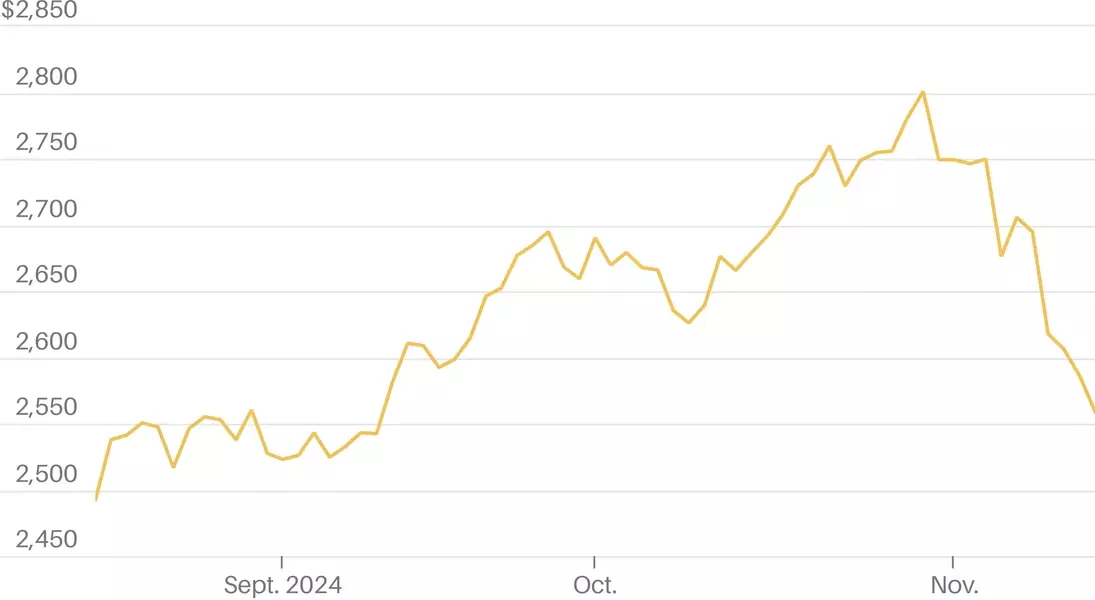The global economy has been facing a period of significant volatility, with various factors contributing to the fluctuations in the prices of precious metals, particularly gold. As the world navigates the complexities of a changing political landscape and the potential impact of future monetary policies, the gold market has become a focal point for investors and analysts alike.
Navigating the Turbulent Gold Market
Shifting Tides in the U.S. Monetary Policy
The recent decline in gold futures can be attributed to the potential for restrictive monetary policy in the United States under a future Trump administration in 2025. The prospect of tighter monetary conditions, such as higher interest rates, has raised the cost of holding non-yielding assets like gold, leading to a sell-off in the precious metal. Investors are closely monitoring the evolving economic landscape and the potential impact of policy decisions on the gold market.As the U.S. Federal Reserve continues to navigate the delicate balance between controlling inflation and promoting economic growth, the future trajectory of monetary policy will be a crucial factor in determining the direction of gold prices. Analysts are closely watching for any signals or indications from policymakers that could provide insights into the potential shifts in the monetary policy landscape.Global Economic Uncertainties and their Impact on Gold
The recent weakness in gold futures also reflects the broader economic uncertainties that have been weighing on the global markets. Factors such as geopolitical tensions, trade disputes, and concerns about the pace of economic recovery have all contributed to the volatility in the precious metals market.Investors often turn to gold as a safe-haven asset during times of economic and political turmoil, seeking to preserve the value of their holdings. However, the current market conditions have presented a more complex landscape, with investors grappling with the competing forces of risk aversion and the potential impact of policy changes.The Role of Speculators and Market Dynamics
The gold market is not only influenced by fundamental economic factors but also by the actions of speculators and market participants. The recent decline in gold futures has been exacerbated by the presence of short-term traders and speculative positions, which can amplify the volatility in the market.Analysts suggest that the combination of potential policy changes, global economic uncertainties, and the dynamics of the speculative market have contributed to the sustained downward pressure on gold prices. As investors navigate this complex environment, they must carefully assess the various factors at play and their potential impact on the long-term performance of the precious metal.Diversification and Risk Management Strategies
In the face of these market fluctuations, investors are increasingly seeking strategies to manage their exposure to the gold market. Diversification across different asset classes and investment vehicles has become a key consideration, as investors aim to balance their portfolios and mitigate the risks associated with the volatility in the precious metals sector.Additionally, the use of risk management tools, such as hedging and options strategies, has gained traction among investors seeking to navigate the unpredictable nature of the gold market. These approaches allow investors to potentially capitalize on market movements while also protecting their downside exposure.As the global economic landscape continues to evolve, the gold market is likely to remain a focal point for investors and analysts alike. By understanding the underlying drivers of price movements and adopting prudent investment strategies, market participants can position themselves to navigate the turbulent waters of the precious metals market.You May Like

